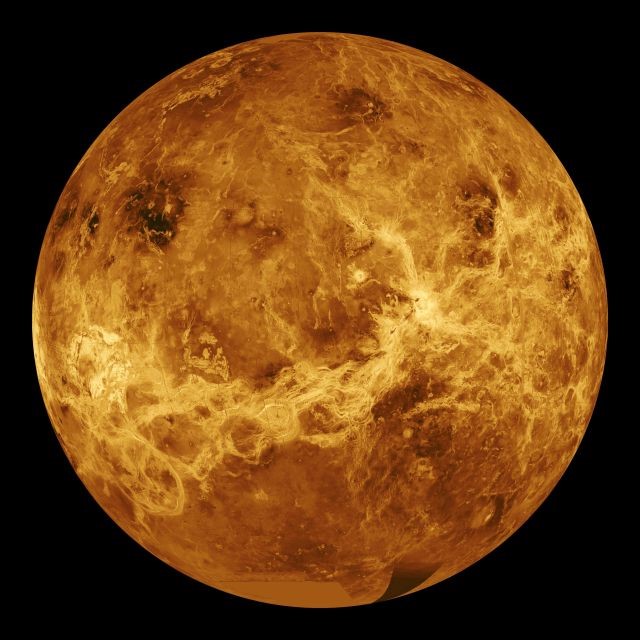
After a twenty year hiatus, NASA will once again visit Venus, the planet closest to Earth, only this time, it’ll be joint effort with its Russian counterpart, Roscosmos. The two nations’ space agencies are currently discussing the viability of launching a mission, which will be called Venera-D mission, sometime in the next decade. They have one year to perform all necessary evaluations and decide whether to pursue the partnership.
“We made a lot of progress,” said David Senske, a scientist at NASA’s Jet Propulsion Laboratory who is the US co-chair of the Venera-D science definition team. “We heard a lot about what they had in mind. We’ve been told this is an IKI/Roscosmos endeavor, so they’re in the driver’s seat.”
The last time NASA performed a Venus was mission between 1990 and 1994, when its Magellan probe mapped 98 percent of the planet’s surface at a resolution of 100 meters. Thereafter, the agency shifted focus primarily toward Mars. Russia, on the other hand, has not successfully conducted a planetary exploration mission since 1985, when its Vega 1 and 2 probes analyzed Venus’ atmosphere as they flew by on their way to Halley’s Comet.
Being a key component of Russia’s federal space program, Venera-D was guaranteed government funding, but given the agency’s recent history of unsuccessful missions, it was decided that a joint-effort with NASA could offset the cost, in turn providing NASA the opportunity to fulfill a number of research goals.
The Venera-D is a two part mission that includes: a 24-hour spacecraft orbit around Venus, examining the planet’s upper atmosphere, cloud patterns, super-rotating winds, and the powerful greenhouse effect that raises the surface temperature to 900 ⁰F (500 ⁰C); and a lander probe that will operate on the planet’s surface for a couple hours, focusing on atmospheric observations, surface imagery and composition measurements, and searching for volcanic activity.
When it was initially designed in 2004, the Venera-D mission sought to remain on Venus’ surface for multiple days, but constructing a spacecraft that could survive more than a handful of hours proved to be too costly.
“When they looked at that in detail, they discovered that was a bridge too far. They wanted to get 24 hours or more [from the lander], but in order to fit into their cost envelope, they’re looking at more of a Vega-type lander,” said Senske.
The modified Venera-D mission is set to launch sometime after 2025, stated Lev Zelyony, director of Russia’s Space Research Institute. Either way, scientists have until Sept. 30, 2016 to present the report before the NASA and IKI decision makers.
Source: Ars Technica and Spacerightnow.com
Advertisement
Learn more about Electronic Products Magazine





